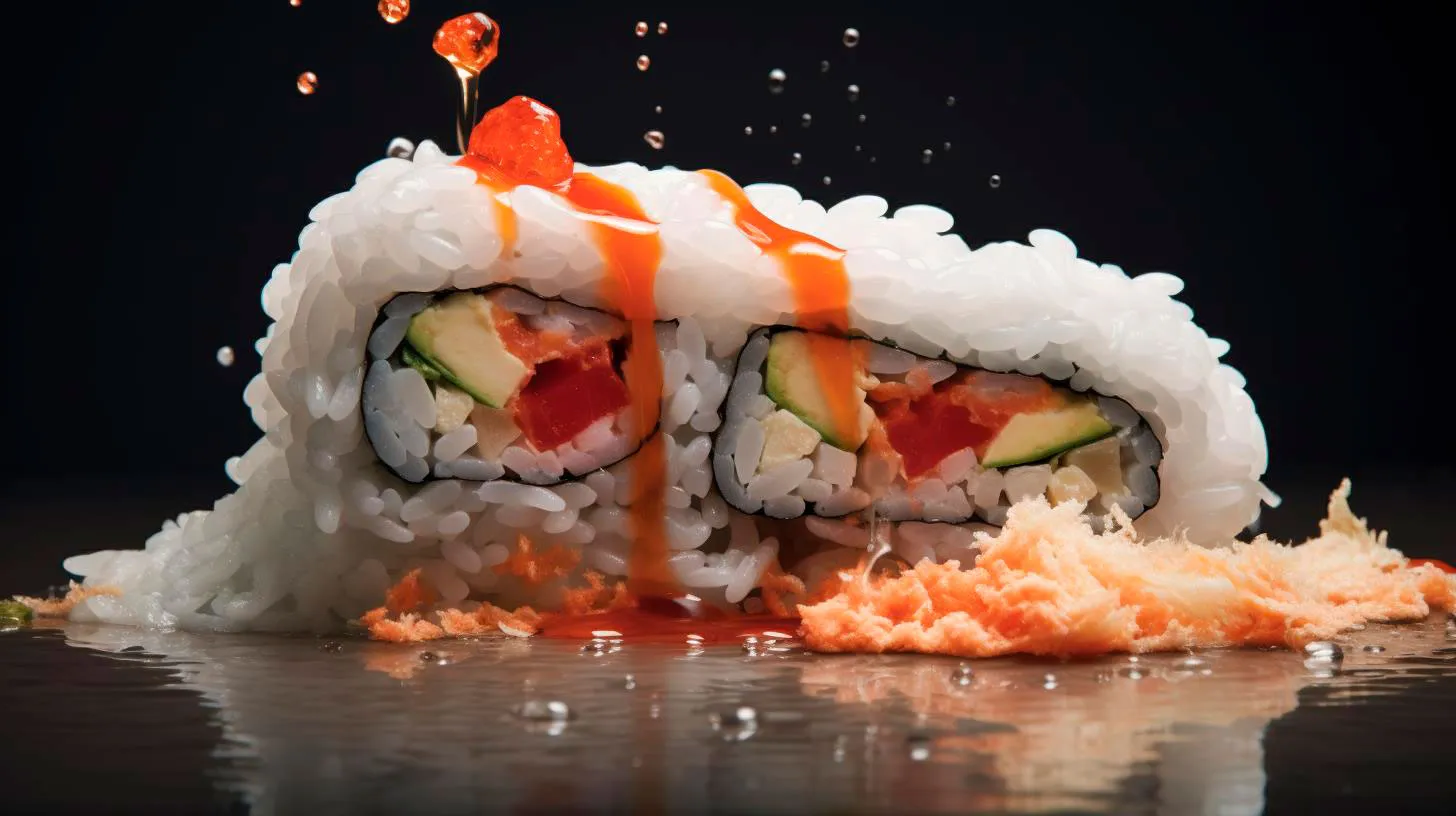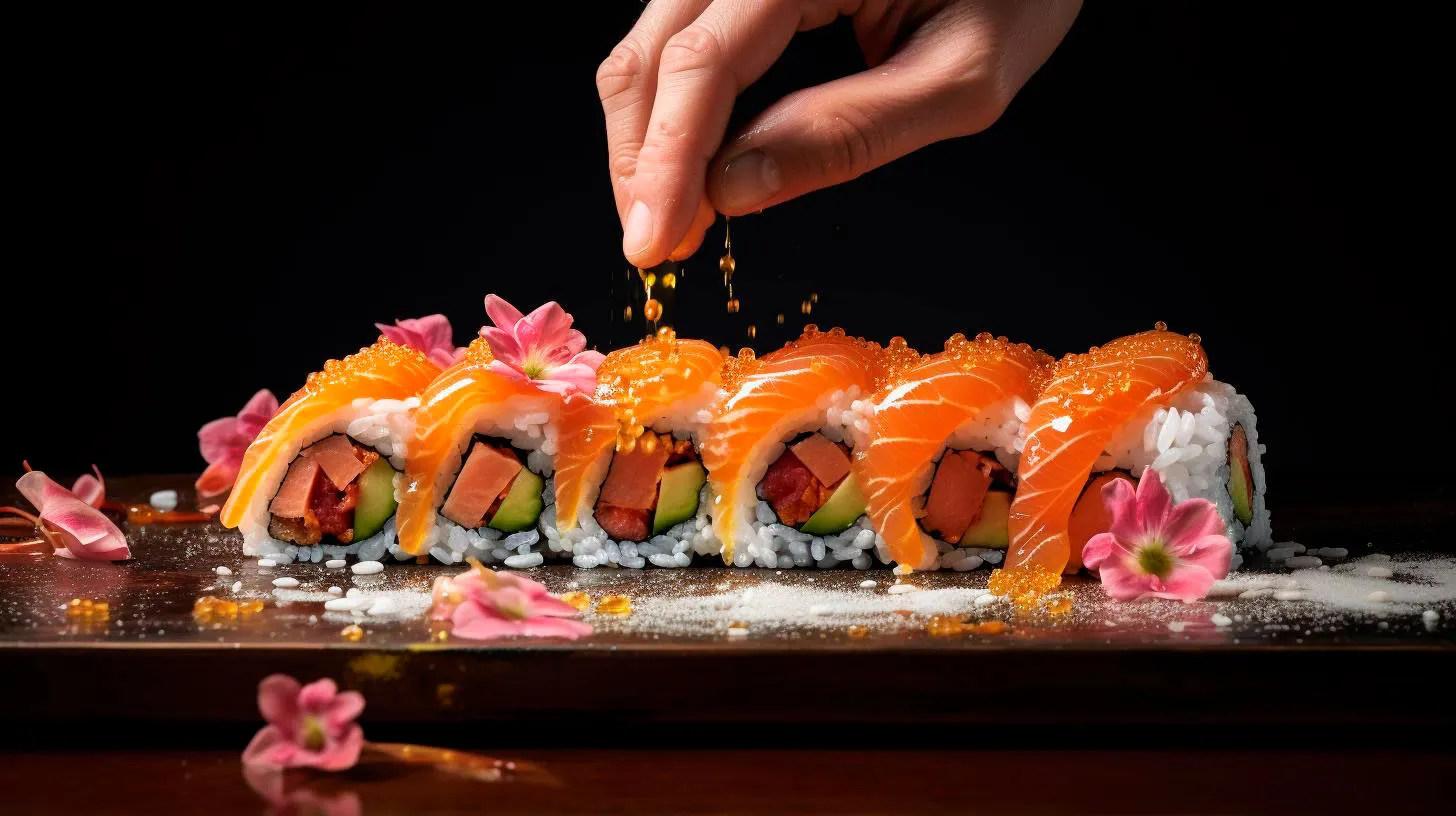Sushi as Cultural Heritage: How Documentaries Shed Light on Japan’s Culinary Tradition
Unveiling the Origins of Sushi
The origins of sushi can be traced back over a thousand years, making it an integral part of Japan’s rich culinary heritage. It first emerged as a preservation technique for fish, where it was wrapped in fermented rice to extend its shelf life. Over time, sushi evolved into an art form, combining fresh seafood, vinegared rice, and expert knife skills to create aesthetically pleasing pieces of edible art known as nigiri sushi.
- Sushi originated in Japan over a thousand years ago, serving as a preservation technique for fish.
- Nigiri sushi, where fresh fish is paired with vinegared rice, is the most widely recognized form of sushi.
The Art of Sushi-Making
Making sushi requires years of practice and mastery, where skilled chefs dedicate their lives to honing their craft. These culinary artisans carefully select the freshest ingredients, delicately slice fish, and expertly shape rice into bite-sized morsels.
A sushi chef’s attention to detail is unparalleled, resulting in an exquisite presentation. The balance of textures and flavors, the meticulous arrangement of ingredients, and the harmony of colors make each sushi platter a culinary masterpiece.
- Sushi-making is an art form that demands years of practice and a keen attention to detail.
- The precise balance of flavors, textures, and colors showcases the mastery of a sushi chef.
Sustainability and Reviving Traditional Techniques
Documentaries shed light on the importance of sustainability in the sushi industry, emphasizing responsible sourcing practices to ensure the longevity of this culinary heritage. As global demand for sushi rises, preserving fisheries and promoting sustainable aquaculture are essential to safeguard the ecosystem and maintain the delicate balance between humans and nature.
Additionally, these documentaries highlight the efforts of sushi chefs who strive to revive traditional techniques that are at risk of being lost in an ever-evolving culinary landscape. By preserving ancient methods of fermentation, aging, and curing, these chefs ensure that traditional flavors and time-honored traditions are passed down to future generations.
- Sustainability practices in the sushi industry are crucial for preserving marine ecosystems.
- Sushi chefs play a vital role in reviving and preserving traditional sushi-making techniques.
Enhancing Cultural Understanding
Sushi documentaries provide a window into Japanese culture, offering a deeper understanding of the country’s values, customs, and way of life. Viewers are transported to bustling fish markets, renowned sushi restaurants, and intimate family-run establishments, immersing themselves in the vibrant tapestry of Japan’s culinary world.
Through these films, audiences gain insight into the discipline, precision, and commitment woven into every slice of fish and grain of rice. They discover the role of sushi as a symbol of celebration, a form of art, and a shared experience that brings communities together.
- Sushi documentaries offer a glimpse into Japanese culture and traditions.
- Sushi represents a shared experience that brings communities together.
Key Takeaways
Sushi, as a cultural heritage, has a profound impact beyond its culinary appeal. Documentaries highlighting the journey of sushi shed light on the origins, artistry, sustainability, and cultural significance of this traditional Japanese dish.
By showcasing the dedication and skill of sushi chefs, these documentaries inspire a newfound appreciation for the art of sushi-making. They encourage sustainable practices within the industry, fostering environmental consciousness in the face of ever-increasing demand.
Moreover, sushi documentaries serve as a portal into a vibrant and rich culture, nurturing cultural understanding and promoting the preservation of traditions. As we indulge in the flavors of sushi, we honor and celebrate a culinary heritage that continues to captivate and unite people worldwide.
Fish Tales: Exploring the Fascinating World of Sustainable Seafood
In this article, we will dive deep into the fascinating world of sustainable seafood, exploring its benefits, challenges, and the crucial role it plays in our oceans.
The Importance of Sustainable Seafood
Sustainable seafood refers to the practice of catching or farming fish in a way that ensures their populations’ long-term survival while minimizing harmful impacts on the environment. As our oceans face numerous threats like pollution, habitat destruction, and overfishing, sustainable seafood practices become paramount for preserving marine ecosystems and maintaining a steady supply of seafood for generations to come.
The Benefits of Sustainable Seafood
- Preserving Marine Ecosystems: Sustainable seafood practices help protect the fragile balance of marine ecosystems, ensuring the well-being of countless species, including fish, coral reefs, and other marine organisms.
- Conserving Biodiversity: By not overfishing and respecting catch limits, sustainable seafood practices allow diverse species to thrive, maintaining the biodiversity of our oceanic habitats.
- Supporting Local Communities: Sustainable seafood practices often prioritize local fishing communities, helping to preserve their livelihoods and promote economic growth in coastal regions.
- Ensuring Food Security: By adopting sustainable fishing methods, we can ensure a steady supply of seafood without depleting fish populations, thus providing long-term food security for future generations.
Challenges in Achieving Sustainable Seafood
While the advantages of sustainable seafood are clear, achieving it on a global scale poses significant challenges. Here are some of the key obstacles that need to be overcome:
- Illegal, Unreported, and Unregulated (IUU) Fishing: IUU fishing causes immense damage to our oceans, undermining sustainability efforts and threatening the long-term viability of fish populations. Strict enforcement and international cooperation are crucial to combat this issue.
- Consumer Awareness and Education: Many consumers are unaware of the importance of sustainable seafood, making it crucial to raise awareness and educate them about the impact of their choices on marine ecosystems.
- Technological Advancements: Innovation in fishing techniques and aquaculture practices are essential to ensure sustainable seafood production. This includes advancements in selective fishing gears, aquaponics, and responsible fish farming practices.
The Role of Certifications and Labels
To help consumers make informed choices, various certifications and labels have been established to identify sustainable seafood options. These certifications, such as the Marine Stewardship Council (MSC) and Aquaculture Stewardship Council (ASC), ensure that seafood products meet specific environmental and social sustainability standards.
When purchasing seafood, look for certification labels to support sustainable fishing practices and responsible fish farms. This empowers consumers to contribute to the preservation of our oceans.
Key Takeaways
In conclusion, sustainable seafood practices play a crucial role in preserving marine ecosystems, protecting biodiversity, and ensuring food security. By embracing responsible fishing methods and supporting sustainable aquaculture, we can enjoy the wonders of the ocean while safeguarding its future for the generations to come.
Remember these key takeaways:
- Choose sustainable seafood options to promote a healthy marine ecosystem.
- Sustainable seafood supports local communities and ensures food security.
- Combatting IUU fishing and raising consumer awareness are essential steps towards a sustainable seafood future.
- Look for reputable certifications and labels when purchasing seafood.
Together, let’s make responsible and sustainable seafood choices for a brighter future!
The Art of Nigiri: Capturing the Mastery of Sushi-making
The Essence of Nigiri
Nigiri sushi, also known as hand-pressed sushi, is created by placing a small mound of vinegared rice on top of a slice of fresh fish or seafood. The word “nigiri” itself translates to “gripping” or “squeezing,” emphasizing the handcrafted nature of this sushi style. Each piece is made with precision, combining simplicity and elegance.
The Artistic Process
Nigiri-making is a meticulous art form that requires years of practice to perfect. Skilled sushi chefs go through a step-by-step process to create the perfect nigiri:
- Selecting Fresh Ingredients: Freshness is key in nigiri-making. The chef carefully chooses the highest quality fish cuts and other seafood, ensuring a remarkable taste experience.
- Preparing the Rice: Sushi rice, seasoned with a delicate blend of rice vinegar, sugar, and salt, forms the foundation of nigiri. Chefs master this balance to achieve the ideal combination of flavors.
- Shaping the Rice: With expert hands, the chef molds the rice into an oblong shape, using light, gentle pressure to achieve the desired firmness and texture.
- Adding the Topping: The chef meticulously selects the perfect slice of fish or seafood to place on top of the rice. This selection is not only based on taste but also considers visual appeal.
- Garnishing and Presentation: To further enhance the visual experience, nigiri is often embellished with a delicate sprinkle of garnishes such as scallions, sesame seeds, or fish roe. These additions elevate both the flavor and aesthetic appeal.
The Cultural Significance
Nigiri embodies the essence of Japanese cuisine and culture. Beyond being a culinary delight, it represents the principles deeply ingrained in Japanese society:
- Respect for Tradition: Nigiri-making requires adherence to traditional techniques and a deep respect for the art form’s history.
- Attention to Detail: Every step in the nigiri-making process demands precision, reflecting the Japanese commitment to meticulous craftsmanship.
- Harmony of Flavors: Nigiri aims to harmonize the flavors of the rice and the topping. This balance showcases the Japanese philosophy of achieving harmony in all aspects of life.
- Visual Aesthetics: The artful presentation of nigiri reflects the concept of “Ichi-go, Ichi-e” – cherishing each moment as a once-in-a-lifetime encounter.
The Delights of Nigiri
Nigiri offers a multitude of delights that captivate sushi enthusiasts worldwide:
- Unparalleled Taste: The combination of tender, melt-in-your-mouth fish with perfectly seasoned sushi rice creates a taste sensation like no other.
- Health Benefits: Nigiri is packed with essential nutrients, including omega-3 fatty acids, vitamins, and minerals.
- Customization Possibilities: Nigiri’s versatility allows chefs to experiment with a vast array of toppings, offering endless combinations for diverse palates.
Mastering Nigiri at Home
If you’re eager to explore the art of nigiri yourself, here are some key takeaways:
- Start with Fresh Ingredients: Seek out high-quality fish and seafood from trusted sources, ensuring freshness and flavor.
- Perfect the Rice: Mastering sushi rice is crucial. Pay attention to the measurement of ingredients, cooking time, and seasoning.
- Honing your Knife Skills: The art of slicing fish correctly is essential for nigiri-making. Invest in a good-quality, sharp sushi knife and practice your technique.
- Experiment with Toppings: Don’t hesitate to explore different topping options such as salmon, tuna, scallops, or even vegetarian alternatives like tofu or avocado.
Now that you have a deeper understanding of the art of nigiri, embrace the experience and savor the delightful journey of sushi-making. Remember, every bite of nigiri represents the culmination of centuries of tradition and craftsmanship.
Beyond the Basics: Discovering the Innovative Techniques of Contemporary Sushi
Revolutionizing Sushi: Techniques That Go Beyond Tradition
Contemporary sushi chefs are embracing new techniques that add a modern flair to this ancient art. Let’s take a closer look at some of these innovative methods:
- Sous-vide Sushi: Sous-vide, a cooking technique that involves vacuum-sealing ingredients in a plastic pouch and cooking them in a temperature-controlled water bath, has made its way into sushi-making. Chefs use this method to achieve precise texture and flavor in their sushi rice and fillings.
- Nitro Sushi: By using liquid nitrogen, chefs are able to freeze sushi ingredients rapidly, resulting in a unique texture and presentation. Nitro sushi offers a delightful experience to diners as they witness the creation of their sushi right before their eyes.
- Vegetable-Based Sushi: With the rise of vegetarian and vegan diets, sushi chefs have begun experimenting with vegetable-based alternatives to fish. From carrot “salmon” to avocado “tuna,” these innovative creations offer a delectable option for those with dietary restrictions.
- Flavored Sushi Rice: Traditional sushi rice is made with vinegar, salt, and sugar. However, contemporary chefs are adding various flavors to the rice, such as truffle, yuzu, or even beetroot, to enhance the overall taste of their sushi creations.
The Advantages of Modern Sushi Techniques
These innovative techniques in sushi-making come with several advantages:
- Enhanced Flavors: By exploring new ingredients and flavor profiles, contemporary sushi chefs are elevating the taste and experience of sushi.
- Expanded Options: Introducing vegetable-based sushi creates a wider variety of flavors and options for diners with diverse dietary preferences.
- Visual Appeal: Techniques like nitro sushi provide a visually stunning presentation, captivating diners and making the dining experience more memorable.
- Creative Expression: These innovative techniques allow sushi chefs to express their creativity, resulting in unique and exciting combinations.
Key Takeaways for Sushi Enthusiasts
If you are a sushi enthusiast or simply curious about the evolving world of sushi, here are some key takeaways to keep in mind:
- The traditional techniques of sushi-making are being enhanced and reinvented by contemporary sushi chefs.
- Sous-vide sushi, nitro sushi, vegetable-based sushi, and flavored sushi rice are just a few of the innovative techniques gaining popularity.
- Contemporary sushi techniques offer enhanced flavors, expanded options, visual appeal, and opportunities for creative expression.
- Exploring these innovative sushi techniques can provide a unique and exciting dining experience.
As sushi continues to evolve, it’s fascinating to witness the fusion of tradition and innovation. With new techniques constantly being developed, sushi lovers can look forward to a world of exciting flavors and creations. So, the next time you visit a sushi restaurant, keep an eye out for these contemporary sushi techniques and prepare to be delighted!


